Figures & data
Figure 1. In the lávvu-laboratory Sámi traditional knowledge and scientific knowledge of reindeer meat smoking is studied through co-production experiments in three identical Sámi tents (lávvus). Reindeer meat is smoked using different wood species and plant parts e.g., juniper wood, willow twigs and birch logs as illustrated (the green lávvu is used to store equipment). The smoke appearance and temperature are investigated, and smoked reindeer meat and fat samples are taken for chemical PAH analysis.
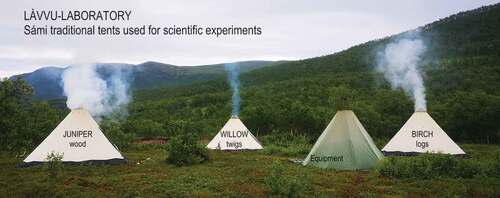
Figure 2. Scientists and reindeer herders research together in the lávvu-laboratory. The data-collection included glow and smoke temperature measurements, smoked reindeer cut samples for PAH-analyses, photo-documentation, dialogues, common observa-tions, and sensation of the smoking practice.
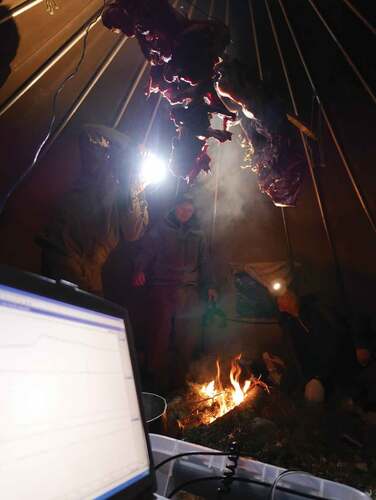
Figure 3. The experimental set-up of the lávvu-laboratory includes three identical lávvus, each with a fire of different wood species and plant parts, and in the top-opening reindeer meat is hung to be smoked.

Figure 4. The thermometer (right in picture b) is coupled to two sensors: one in the fire (picture b) and one by the meat (picture a). After smoking, the temperature data were logged on a computer (picture b).
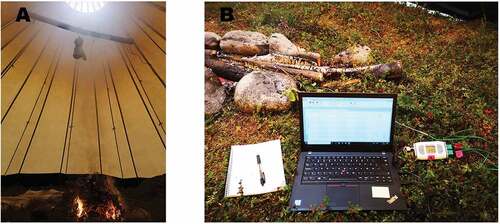
Table 1. Mean moisture (%) of wood selected for smoking in the lávvu-laboratory, and related fat and dry matter content of analysed smoked reindeer meat and fat samples. Weight reduction (%) of the reindeer cuts after salting and smoking appear. Meat and fat sample R1; R2; R3; and R4 is smoked by traditional Sámi reindeer herders
Table 2. Glow temperature mean, minimum, and maximum (°C) of the different wood species and plant parts used for smoking in the lávvu-laboratory
Table 3. Smoke temperature mean, minimum and maximum (°C) of the different wood species and plant parts used for smoking in the lávvu-laboratory
Figure 5. Smoke temperature graphs and photographs of the smoking fires and related reindeer meat cuts smoked with birch logs without bark; birch logs with bark; birch twigs with leaves; and birch logs with bark combined with twigs with leaves in the lávvu-laboratory.
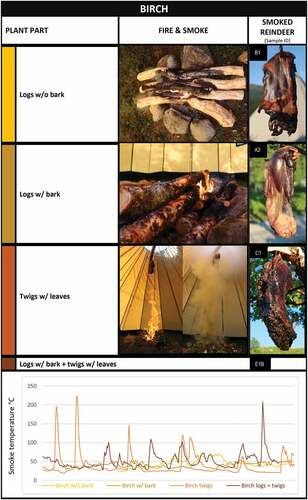
Figure 6. Smoke temperature graphs and photographs of the smoking fires and related reindeer meat cuts smoked with willow logs with bark; willow twigs with leaves; and willow logs with bark combined with twigs with leaves in the lávvu-laboratory.
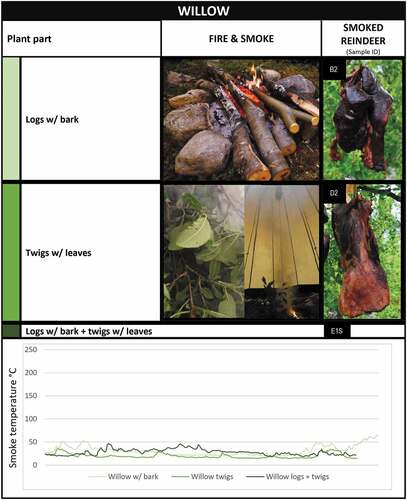
Figure 7. Smoke temperature graph and photographs of the smoking fire and related reindeer meat cut smoked with juniper twigs in the lávvu-laboratory.
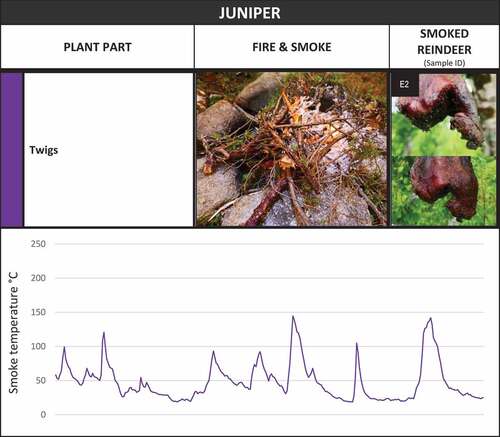
Figure 8. Smoke temperature graph and photographs of the smoking fire and related reindeer meat cut smoked with beech wood logs and chips in the lávvu-laboratory.
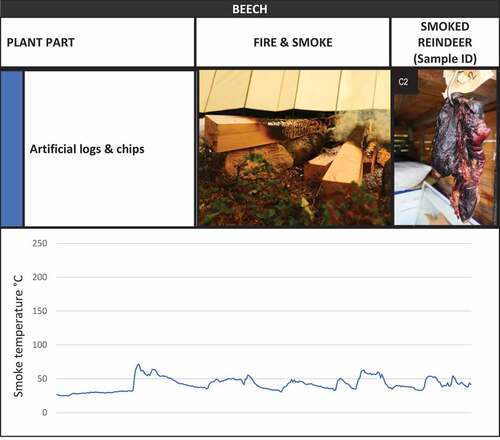
Figure 9. PAH4 contamination of smoked reindeer meat and fat in relation to mean smoke temperature in a Sámi lávvu (tent) by different wood species and plant parts.
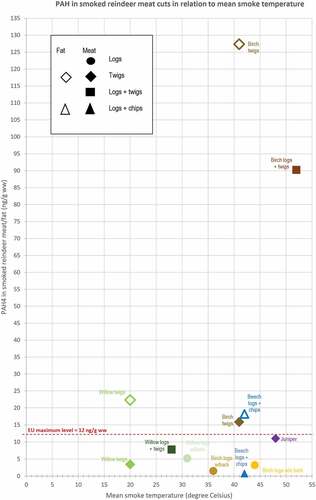
Table 4. Smoked reindeer meat and fat BaP and PAH4 contentaminations from smoking with different wood species and plant parts in the lávvu-laboratory. Meat and fat samples R1, R2, R3 and R4 are smoked by traditional Sámi reindeer herders. Mean ±SD appear for samples with several batches analysed
